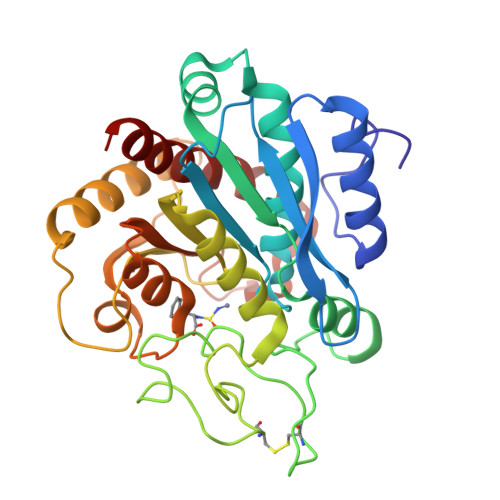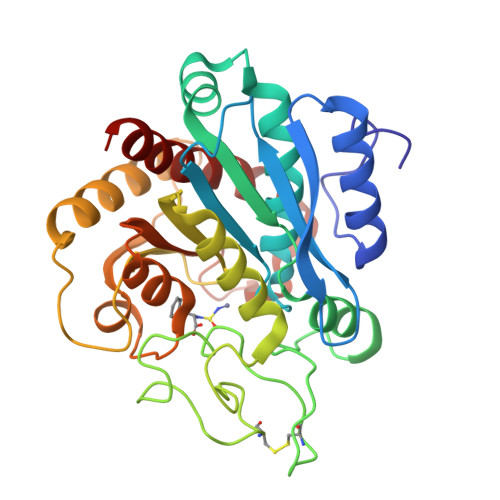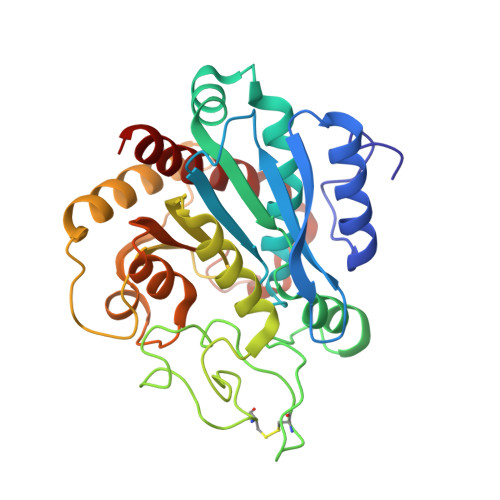Sulfamide-Based Inhibitors for Carboxypeptidase A. Novel Type Transition State Analogue Inhibitors for Zinc Proteases
Park, J.D., Kim, D.H., Kim, S.J., Woo, J.R., Ryu, S.E.(2002) J Med Chem 45: 5295-5302
- PubMed: 12431056
- DOI: https://doi.org/10.1021/jm020258v
- Primary Citation of Related Structures:
1IY7 - PubMed Abstract:
N-Sulfamoylphenylalanine and its derivatives having varied alkyl groups on the terminal amino group were designed rationally as transition state analogue inhibitors for carboxypeptidase A (CPA) and synthesized. In CPA inhibitory assays the parent compound having the (S)-configuration, i.e., (S)-1a, showed potent inhibitory activity with the K(i) value of 0.64 microM. Its enantiomer was shown to be much less potent (K(i) = 470 microM). Introduction of an alkyl group such as methyl or isopropyl group on the terminal amino group of (S)-1a lowered the inhibitory potency drastically. Introduction of a methyl group on the internal amino group of (S)-1a also caused a drastic reduction of the inhibitory activity. The structure of the CPA x(S)-1a complex determined by single-crystal X-ray diffraction reveals that the sulfamoyl moiety interacts with the zinc ion and functional groups at the active site of CPA, which is reminiscent of the postulated stabilization mode of a tetrahedral transition state in the CPA-catalyzed hydrolysis of a peptide substrate. On the basis of the design rationale and the binding mode of (S)-1a to CPA shown by X-ray crystallographic analysis, the present inhibitors are inferred to be a novel type of transition state analogue inhibitor for CPA.
Organizational Affiliation:
Center for Integrated Molecular Systems, Division of Molecular and Life Sciences, Pohang University of Science and Technology, San 31 Hyoja-dong, Namku, Pohang 790-784 Korea.


















